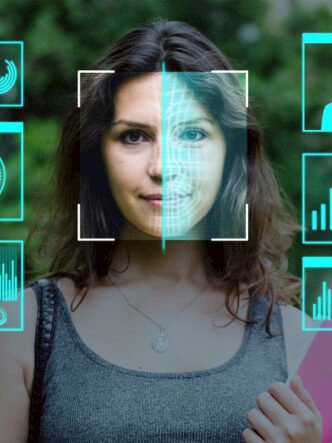Microlearning is an educational strategy that involves breaking topics down into smaller, more digestible units. Each unit has a single focus. Videos provide a powerful way to deliver microlearning in e-learning and corporate training settings. Video-based learning offers more engagement than learning from text alone.
As microlearning videos are shorter than traditional e-learning videos, learners can use them to learn quickly. Employees learn what they need to know at the right time and then apply their knowledge to the task at hand. Immediately applying what they learn increases knowledge retention.

Key benefits of microlearning videos
Improve engagement and completion rates
You may be giving learners too much information to absorb in one sitting. Bite-sized learning aligns well with how the brain processes information. Learners feel more engaged when they don’t have too many unnecessary facts to absorb. This makes learning more memorable and improves completion rates.
More flexibility
The ability to learn on-demand at any time and from anywhere allows learners to fit learning into their busy schedules. Microlearning and mobile learning are closely connected. Learners can not only watch short videos while on the go but they can do so on a mobile device of their choice. Recent research shows that many learners like to learn on their mobile phones.
Boost retention through focused, digestible content
The average learner will forget about 50% of what they learn within a day and about 90% of what they learn in a month. Creating focused, digestible content helps to reinforce information retention. A short and powerful explainer video will enable learners to retain more than a lengthy, detailed one.
Save time and money
You can create and update microlearning courses faster than traditional e-learning courses. Creating these videos doesn’t cost as much as producing lengthy videos.
You should look for tools that can help you create bite-sized training courses quickly and painlessly. It can save you hours that you may have spent in the past setting up in-person training or writing compliance manuals.
You can use microlearning videos to respond quickly to your changing business needs and prioritize your time. It helps save time and money if you use existing training content and repurpose it into microlearning courses.
The Cincopa video hosting platform allows you to use video-on-demand and live streaming to offer asynchronous and synchronous learning to learners. Learners who miss out on a live lecture can catch up later when you save it as video-on-demand to a video library.
How to create effective microlearning videos
To create effective microlearning videos, you need to know your learners and what you want to achieve with your videos. This allows you to decide on module formats based on your objectives.
1. Keep videos between two to five minutes for optimal engagement
If employee training videos are too long and full of irrelevant details, employees will quickly lose focus. Bite-sized videos of two to five minutes offer a short burst of information. This information is easy to engage with and digest. Short corporate training videos are perfect for delivering training on soft skills.
2. Focus on one key concept per video
Focus on a single, performance-based learning objective in each short video. For example, a short video can focus on how an employee should deal with an irate customer. It can cover how to deal with bullying or how to make the workplace more inclusive. With one key concept, it is easier to evaluate video performance. Did the learners grasp what you wanted them to learn? Could they identify the right way to deal with an angry customer?
3. Use visuals, animations, and storytelling to enhance learning
Learners find information in a visual or narrative form easier to retain. This doesn’t mean riddling the content with every kind of visual as this could distract learners from core content.
- Clear, short stories should relate directly to the main point of the video.
- Visual aids such as animations can make it easier to understand complex information.
- Short video scenarios that depict real-life situations help to give learning context.
- Short case studies with visuals can help learners to understand the application of the concepts they learn.

Best practices for implementing microlearning videos
Embed videos in LMS for structured learning
When you embed microlearning videos in your LMS, it helps to drive adoption. You can structure learning and make videos easy to find and access. On Cincopa, you can use an SEO-enabled embed code to embed short videos into your LMS.
Combine with quizzes and other interactive elements to engage learners
Using interactive elements such as quizzes, annotations, polls, and calls-to-action in your microlearning videos will increase engagement. These features encourage active learning. You can even add gamification mechanics such as scores and opportunities to level up. The Cincopa platform allows you to use interactive elements in your microlearning videos to engage learners.
Ensure accessibility with captions and transcripts
You should aim to learn more about video-based training in remote and hybrid workplaces. For example, the use of captions and transcripts ensures that short videos are accessible to employees with hearing disabilities or those who don’t speak English as a first language.
Develop and promote a culture of continuous learning
Regularly suggest ways for learners to upskill and improve their performance. For example, using video messaging to send notifications to learners based on their behavior can take them directly to a relevant microlearning course. Ongoing use of these courses will not only build employee skills but also improve your business ROI.
Measuring success: How to track microlearning video engagement
Key metrics to monitor when tracking microlearning video engagement include watch times and completion rates. Average watch time is the duration learners spend watching a video.
- If learners don’t watch an entire microlearning video, you will need to make the content more engaging. Using interactive elements like quizzes or surveys can improve engagement.
- Learners may drop off at a certain point in a video. This may indicate that you need to improve the content after that specific point.
- If a video includes links to additional information, you can see whether learners click on them or not. This can show how much interest they have in learning more about a topic.
- How often learners watch the same video segment could indicate that the information is too complex to understand. If they keep pausing and rewinding, they may need further context or simpler explanations. Using animations or real-life scenarios can simplify the content.
Using the Cincopa video hosting platform’s video analytics gives you in-depth insights into learner demographics and behavior. You can see how learners interact with videos on video heatmaps. Warmer colors show high engagement and cooler colors show lower engagement.
A live feed offers detailed information about learners such as their demographics and the devices they use. This allows you to identify areas for improving your video strategies. Every data insight you receive allows you to keep refining your microlearning videos.
Conclusion
Microlearning is a smart learning strategy that appeals to learners. It offers more engagement, understanding, and retention of knowledge. You can create and implement it to get better results. On the Cincopa home page, you will find out more about how to create, host, and track microlearning videos. It offers interactive features, analytics, and mobile-friendly playback. Sign up for a free trial and you can explore how they can improve microlearning.









